Hello hivers, last Friday, I was in the fire assay laboratory at my workplace. There, what we do is obtain gold through smelting and cupellation. If you want to find out how gold is obtained, then follow along with me:

The first thing we do is analyze if the sample has sulfur since sulfur negatively affects the smelting of gold, causing incomplete fusion. To identify if the samples are sulfurous, they emit a smell of rotten eggs. If we confirm that the samples contain sulfur, we take them to a roasting muffle, where sulfur will oxidize and disappear.
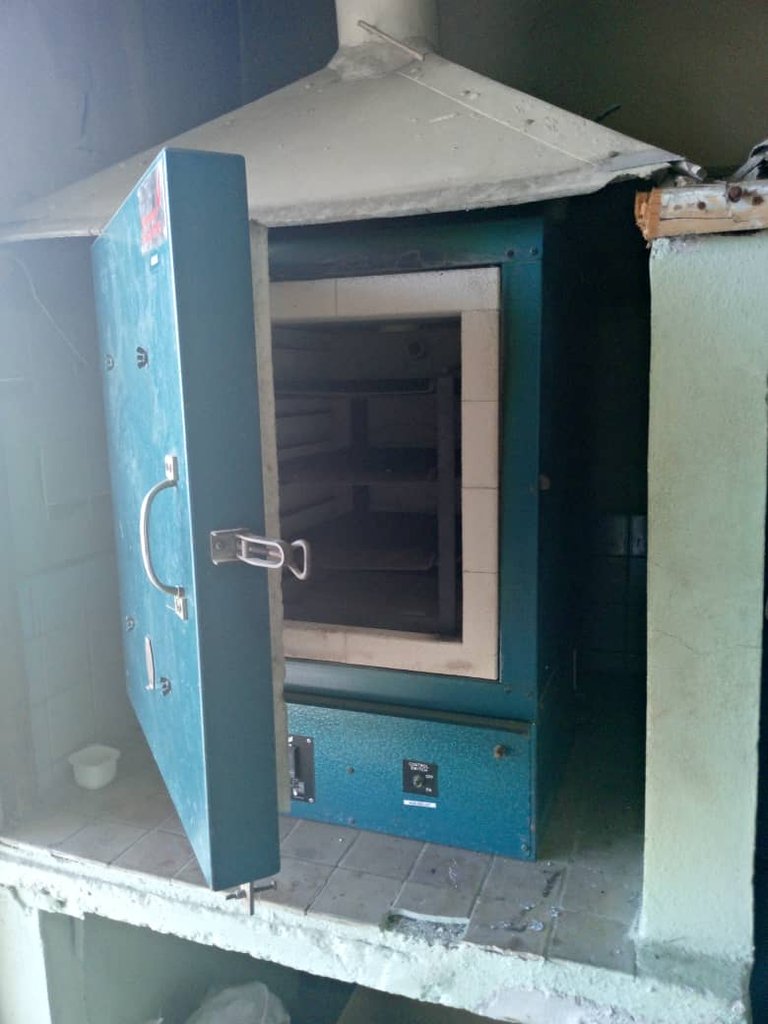
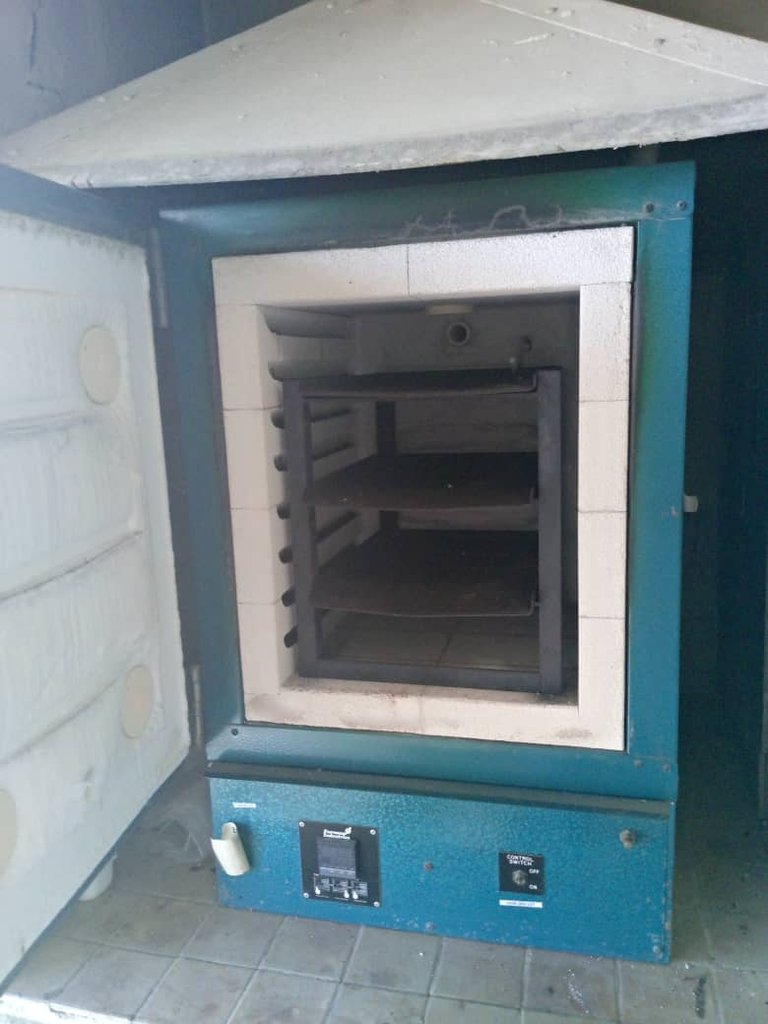
Then, we proceed to the weighing technique. All the reagents are added to crucibles made of refractory materials and calcined clays to withstand temperatures above 1000°C.
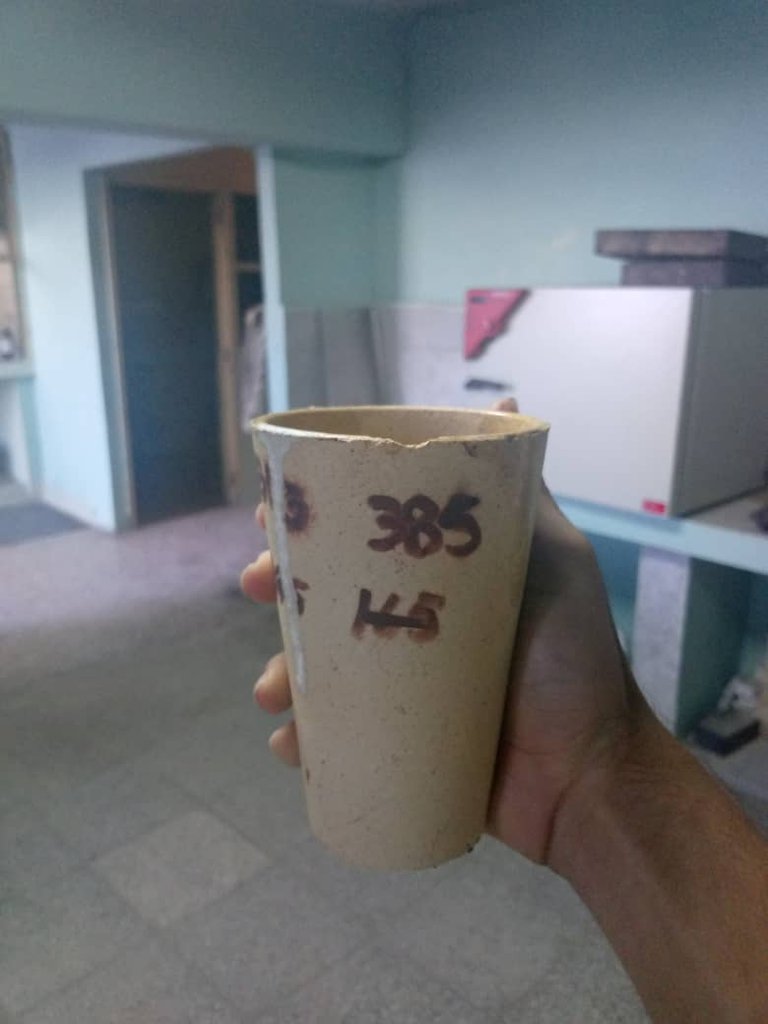
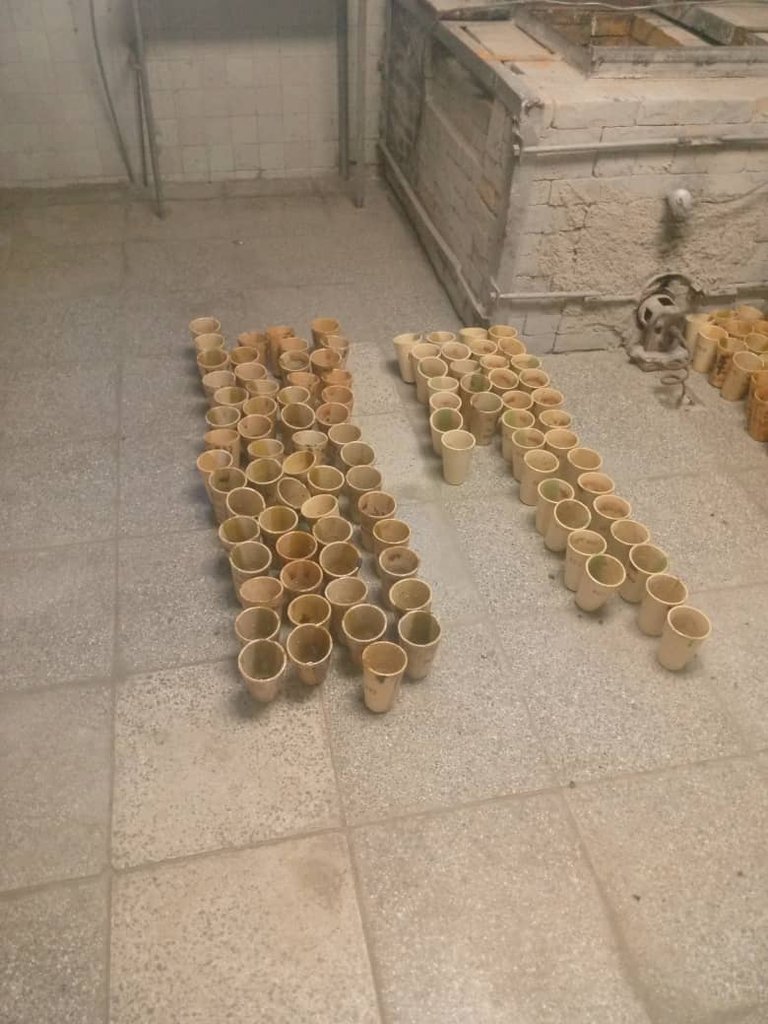
These are coded with a special acidic ink of ferric chloride, which, at high temperatures, remains in the crucible and does not disappear.
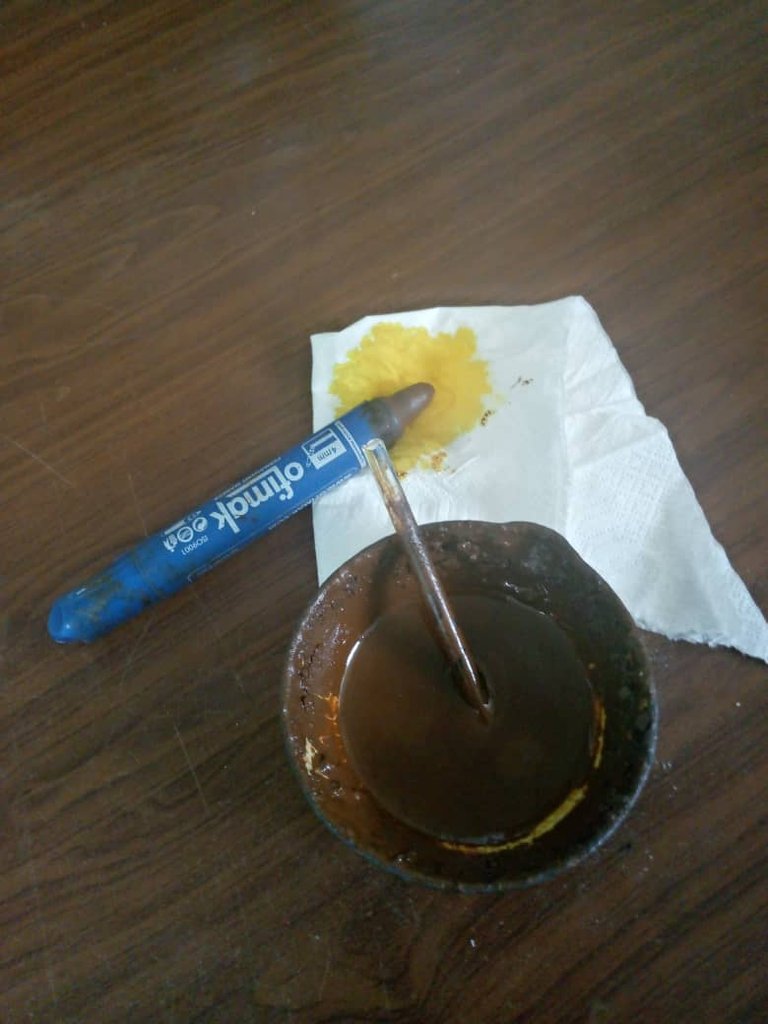
The first thing added is the premixture containing litharge, or in other words, lead oxide, and sodium carbonate to form the lead button.
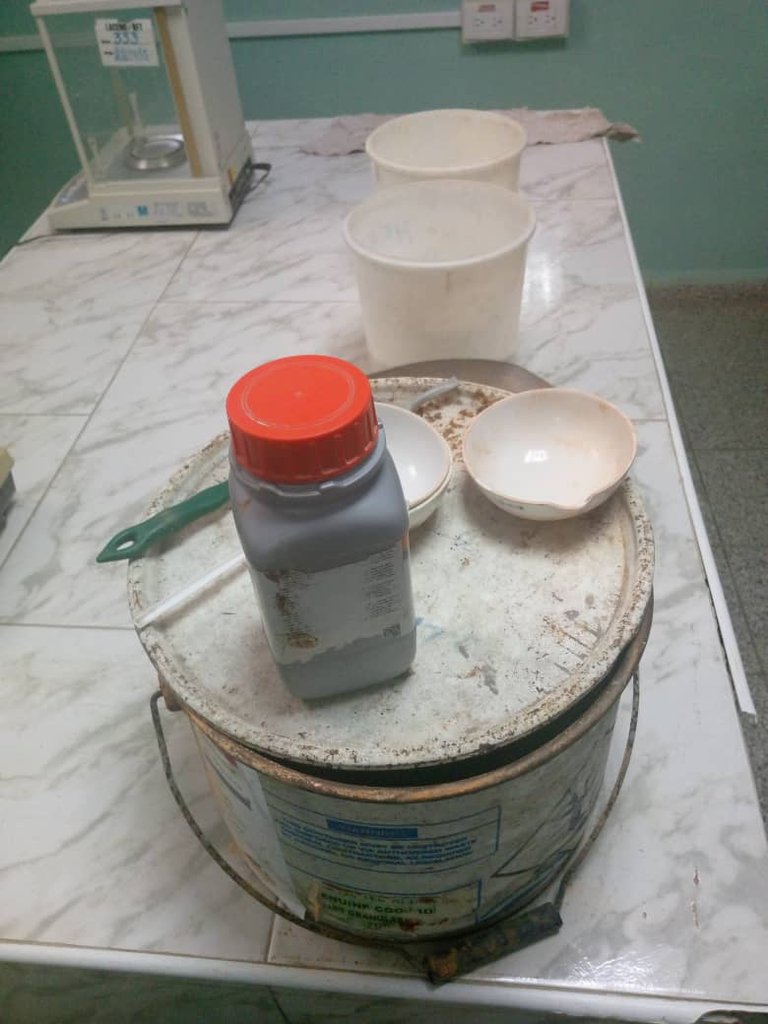
Wheat flour serves as a reducing agent, fluorite or calcium fluoride to eliminate any excess aluminum that the sample may have, sand or silica to form the silicates that are the slag, and sodium tetraborate or borax as a flux. Lastly, the sample is added. After adding all the reagents, the sample is homogenized, which is simply mixing the sample well with all the reagents using a spatula until it is one uniform mixture. Then, silver nitrate is added since silver is a collector of precious metals, and finally, a layer of borax is added to prevent the sample from boiling.
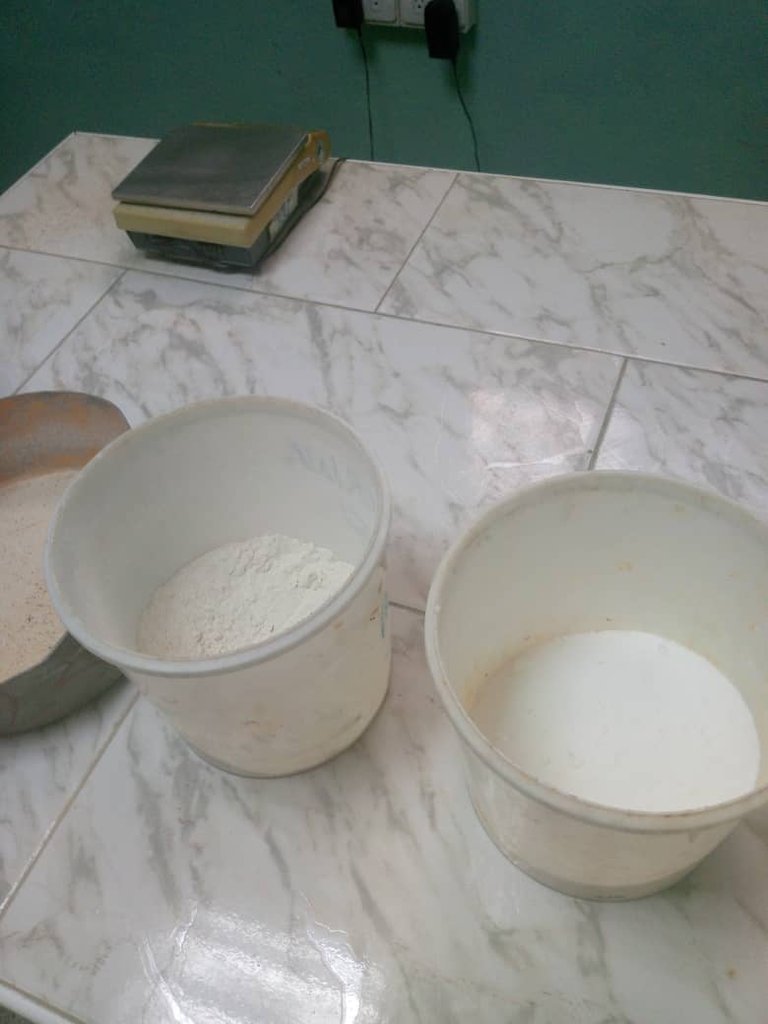
Next, the samples are melted in the muffle, where temperatures reach 1000°C. The smelting process takes about 45-60 minutes, resulting in slag with the lead button inside.
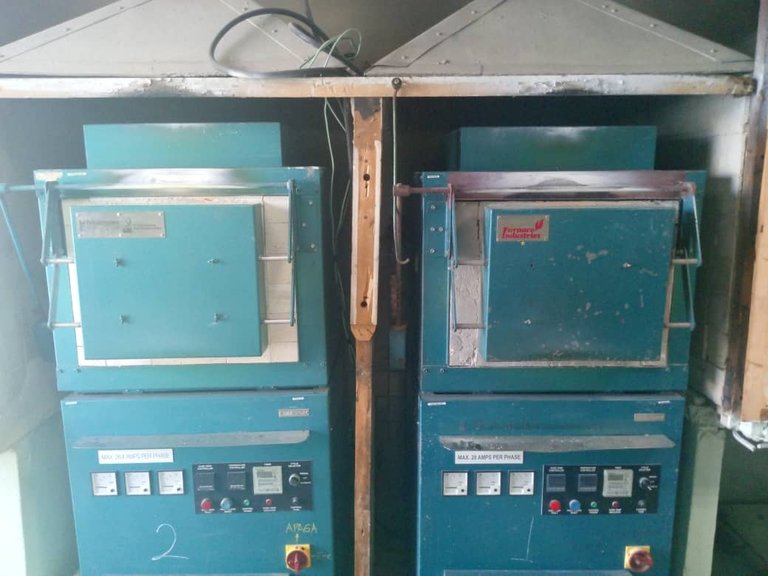
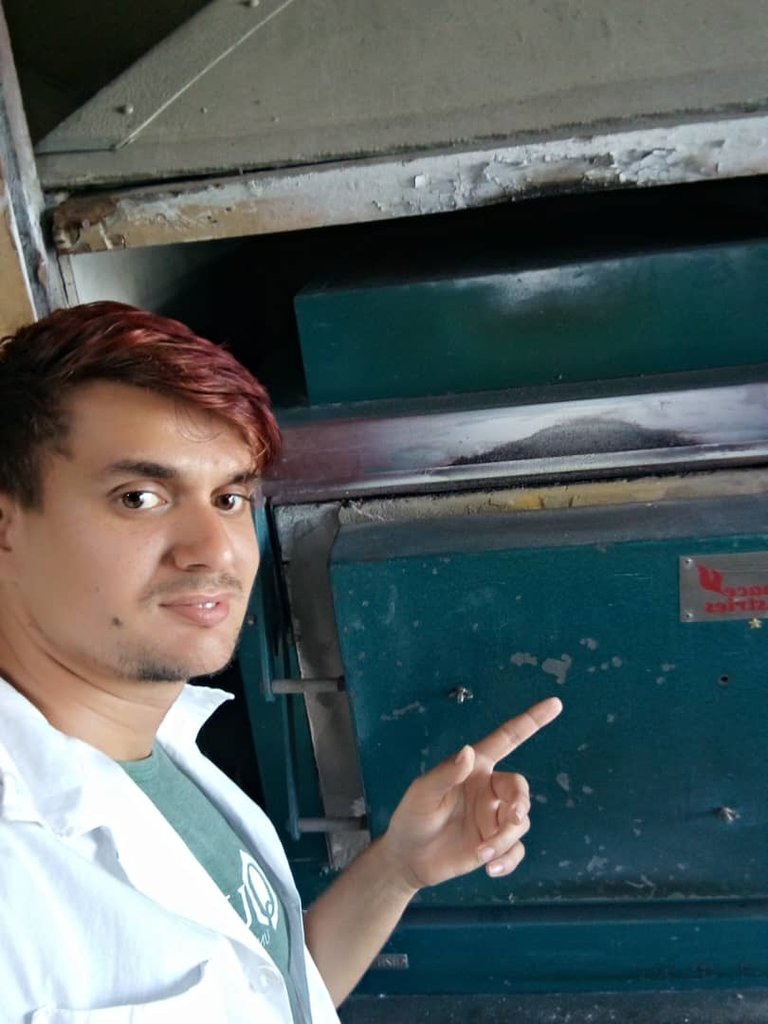
Subsequently, with a hammer, the lead button is obtained by breaking the slag, and this button is ready for cupellation in the cupellation muffle.
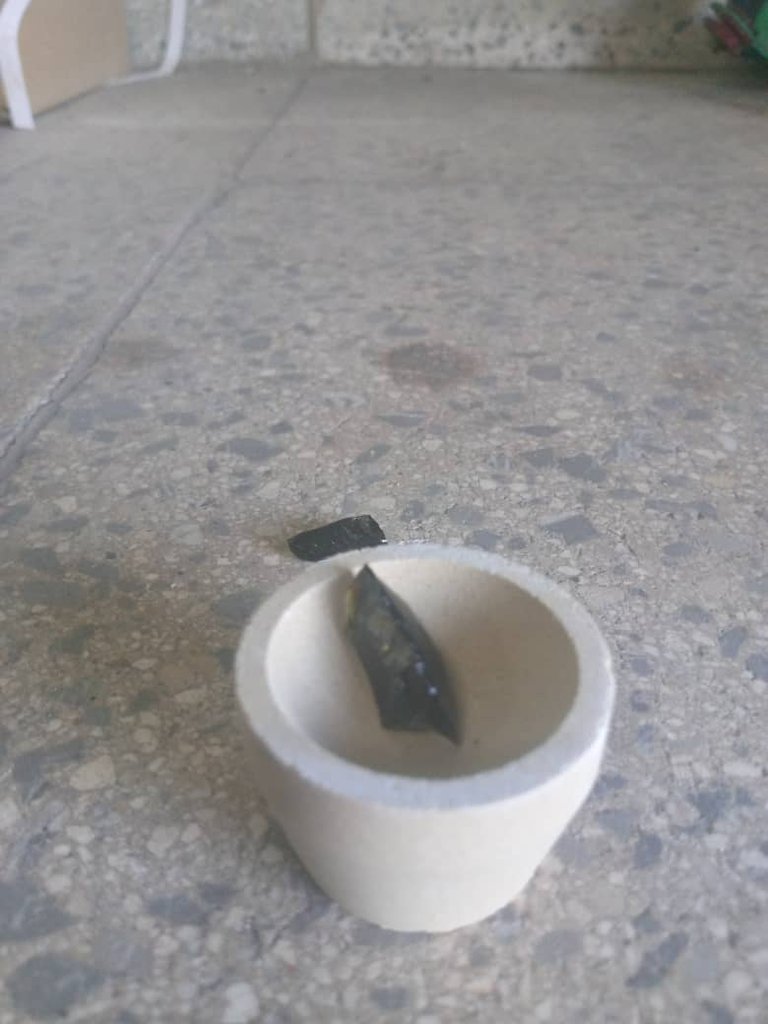
This process is to eliminate lead and leave only the button with silver and gold. This process takes about 12 minutes at a temperature of 930°C until the buttons open, producing a flash of light.
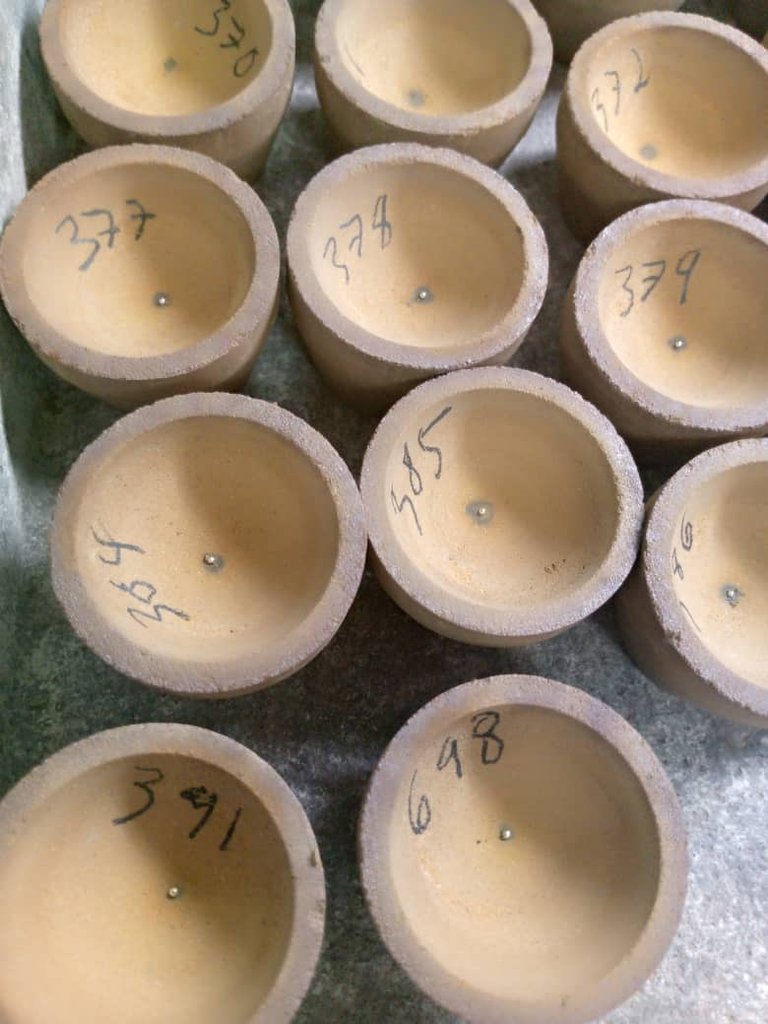

After obtaining the gold and silver button, or what we call doré, it is added to a test tube, and the dissolution process begins.
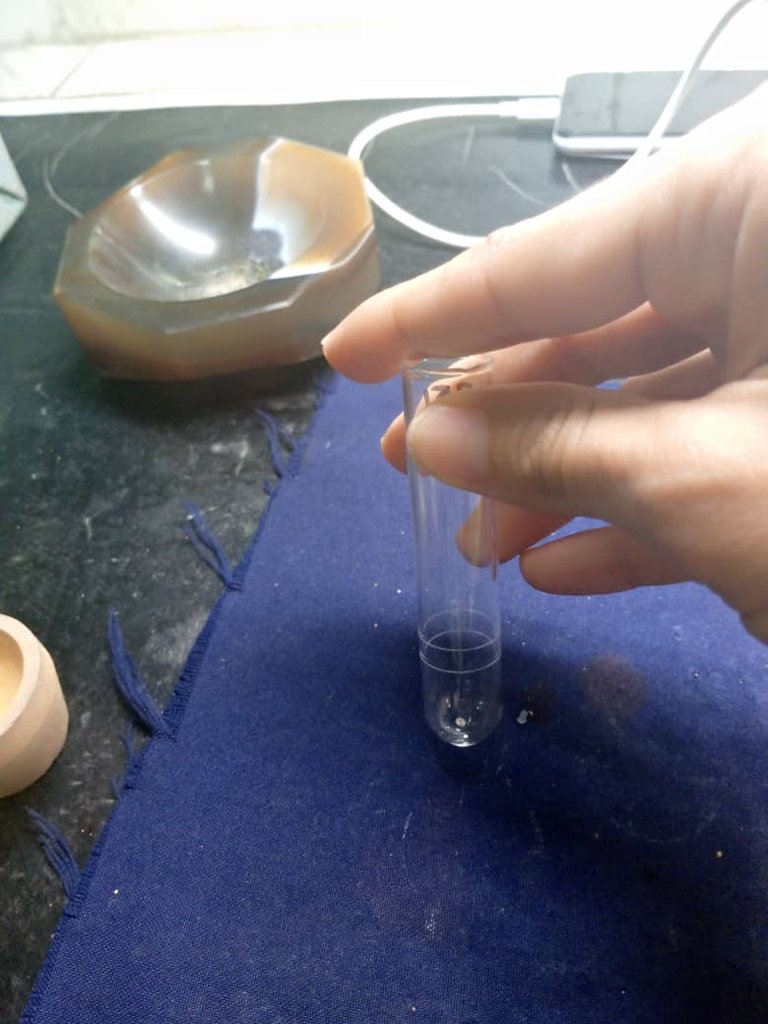
For this, nitric acid is added, which eliminates the silver, leaving only pure gold. This is dissolved with aqua regia and is ready to be read in atomic absorption, which tells us how much gold each sample contains.
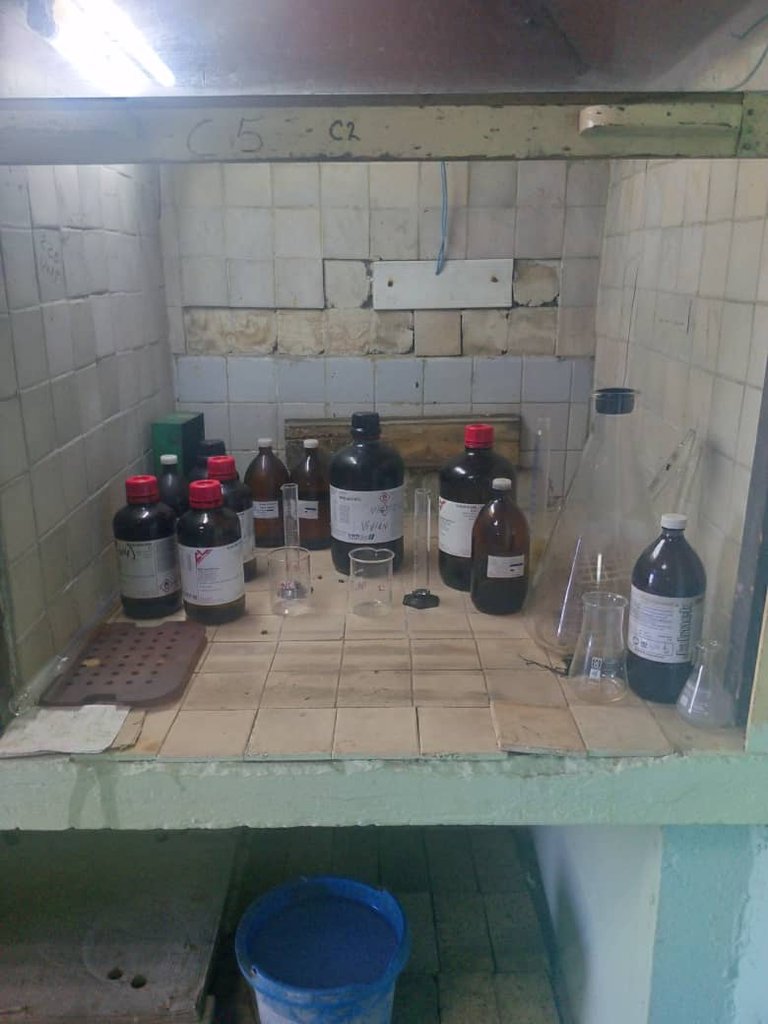
This process is crucial as it tells us the amount of gold in each sample, giving an idea of whether the analyzed soil has enough gold to extract.
Well, hivers, I hope you liked it and learned about the gold extraction process. Thanks, and greetings, hivers.
Note: The photos were taken by me, through my cell phone: Tecno Go Spark. Note: The text was translated by Deepl translator.
Español:
Hola hivers, el viernes pasado estuve en el laboratorio de ensayo al fuego en mi trabajo. Allí lo que hacemos es obtener oro mediante una fundición y una copelación. Si quieren enterarse cómo se obtiene el oro, pues sigan conmigo:

Lo primero que hacemos es analizar si la muestra tiene azufre, ya que el azufre interfiere en la fundición del oro de forma negativa, produciendo una fundición incompleta. Para identificar si las muestras son sulfurosas, éstas desprenden un olor a huevo podrido. Si confirmamos que las muestras poseen azufre, las llevamos a una mufla de tostación, donde el azufre se oxidará y desaparecerá.


Luego procedemos a la técnica de pesada. Todos los reactivos los añadimos sobre crisoles hechos de materiales refractarios y arcillas calcinadas para que puedan soportar temperaturas superiores a 1000°C.


Estos son codificados por una tinta especial ácida de cloruro férrico, la cual al alcanzar temperaturas altas la tinta se queda en el crisol y no desaparece.

Lo primero que añadimos es la premezcla que contiene litargirio o lo que es lo mismo, óxido de plomo, y carbonato de sodio para formar el botón de plomo.

Harina de trigo como agente reductor, fluorita o fluoruro de calcio, para eliminar algún exceso de aluminio que pueda tener la muestra, arena o sílice para formar los silicatos que son las escorias, y el tetraborato de sodio o bórax como fundente. Por último, se añade la muestra. Después de añadir todos los reactivos, se procede a la homogeneización de la muestra , que no es más que mezclar bien la muestra con todos los reactivos con una espátula hasta que sea solo una. Luego se le añade nitrato de plata, ya que la plata es un colector de metales preciosos, y por último se le añade una capa de bórax para que la muestra no ebulla.

Después se procede a la fundición de las muestras en la mufla, donde se alcanzan temperaturas de 1000°C. El proceso de fundición dura unos 45-60 minutos, obteniéndose así la escoria con el botón de plomo adentro.


Luego, con un martillo, se obtiene el botón de plomo rompiendo la escoria, y este botón estaría listo para copelar en la mufla de copelación.

Este proceso es para eliminar el plomo y que solo quede el botón con la plata y el oro. Este proceso dura unos 12 minutos con una temperatura de 930°C hasta que los botones se abran produciendo un destello de luz.


Luego de obtenido el botón de oro y plata, o lo que llamamos doré, este se añade en un tubo de ensayo y se procede a la disolución del mismo.

Para esto, se añade ácido nítrico, el cual elimina la plata y solo queda el oro puro. Este se disuelve con agua regia y estaría listo para leer la muestra en absorción atómica, la cual nos dirá cuánto oro tiene cada muestra.

Este proceso es muy importante, ya que nos dice la cantidad de oro que existe en cada muestra y esto da una idea de si la tierra que se está analizando tiene suficiente oro para obtener.
Bueno, hivers, espero que les haya gustado y que hayan aprendido sobre la obtención de oro. Gracias y saludos hivers.
Nota: Las fotos fueron tomadas por mi, a través de mi celular: Tecno Go Spark.
Nota: El texto fue traducido por Deepl traductor.
That’s a lot of work just to see if it’s worth mining.
!discovery 41
Friend, I assure you that the process is very beautiful, and the process is a little long but you can make many samples at the same time and that speeds up the process. thanks for the support
Thank you for your witness vote!
Have a !BEER on me!
To Opt-Out of my witness beer program just comment STOP below
Thank you for your witness vote!
Have a !BEER on me!
To Opt-Out of my witness beer program just comment STOP below
This post was shared and voted inside the discord by the curators team of discovery-it
Join our Community and follow our Curation Trail
Discovery-it is also a Witness, vote for us here
Delegate to us for passive income. Check our 80% fee-back Program
Congratulations @alejandro1799! You have completed the following achievement on the Hive blockchain And have been rewarded with New badge(s)
Your next target is to reach 2250 upvotes.
You can view your badges on your board and compare yourself to others in the Ranking
If you no longer want to receive notifications, reply to this comment with the word
STOPCheck out our last posts: